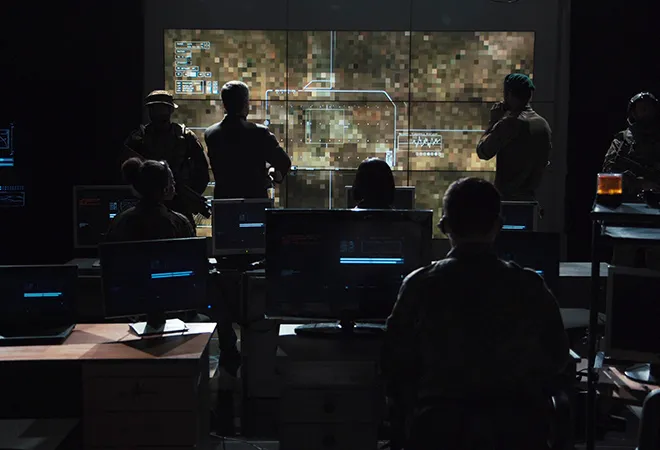
Concerns over how the global nuclear framework can sustain and function efficiently are as old as nuclear weapons technology itself. In 1963, Robert McNamara, then US Secretary of Defence, had written a memo to President John F. Kennedy, noting that in addition to the four countries already declared as nuclear powers then — the US, the Soviet Union, the UK and France — four more were to acquire declared nuclear weapons capabilities. These countries were China, Israel, India and Sweden. McNamara calculated that by 1973, a total of 12 countries would be in possession of nuclear weapons.
Similar bleak projections have been made on several occasions throughout history. Fortunately, none of them have come true, and credit is due the international community for their concerted efforts in upholding the agenda of nuclear non-proliferation and arms control.
However, the global nuclear framework still faces many challenges. Often, bleak predictions motivate the international community to collectively ensure that such predictions do not come true.
The international community appears to be divided on the solution to the North Korean problem, and whether complete denuclearisation should be the end goal of a prospective deal with Pyongyang.
With repeated tests of nuclear devices and missile systems, it is North Korea that today no doubt presents the gravest challenge to the framework. The international community appears to be divided on the solution to the North Korean problem, and whether complete denuclearisation should be the end goal of a prospective deal with Pyongyang. Considering the efforts that Kim Jong-un’s regime has made to acquire an operational, costly nuclear weapons programme, it is unlikely that Pyongyang will agree to complete denuclearisation without significant concessions, including a possible reunification of the Korean peninsula under Kim Jong-un’s leadership. This, of course, will have significant geopolitical ramifications. A deal without denuclearisation as its last stage, on the other hand, will leave the global nuclear framework dented forever. While speculations of consequential horizontal proliferation of nuclear weapons have been labelled “far-fetched,” there are hints that Japan could consider nuclearising.
As the global nuclear framework continues to grapple with the daunting North Korean challenge, it is equally important to consider other challenges, e.g. the threat to the Joint Comprehensive Plan of Action (JCPOA), which Iran and the P5+1 countries negotiated in 2015; the failing US–Russia arms control pacts; the aggressive nuclear posturing with deployment of tactical nuclear weapons for warfighting; the technological advancements in delivery systems, such as the hypersonic vehicles that could lead to a fresh wave of arms race in the world; and the long-ignored agenda of global nuclear disarmament.
Challenges to the future of the JCPOA is a significant threat to the framework’s agenda of nuclear non-proliferation. US President Donald Trump seeks an additional agreement that broadens the mandate of the deal to include Iran’s long-range missile programme, tightens the verification measures of the JCPOA further, and extends the terms of the deal indefinitely, removing the “sunset” clauses. Even with this additional deal — chances of which materialising are feeble — the case of Iran, in principle, will allow states to possess enrichment technology and be on the nuclear “threshold.” This is another challenge for nuclear non-proliferation.
The existing mechanisms, primarily negotiated by the US with the Soviet Union during the Cold War — and with Russia since — are now breaking down.
Meanwhile, the arms-control agenda of the framework has suffered severe setbacks in the last decade. The existing mechanisms, primarily negotiated by the US with the Soviet Union during the Cold War — and with Russia since — are now breaking down. There is a new wave of nuclear warhead modernisation across the board, led primarily by the US. Coupled with the ongoing and rapid development of various modern weapons delivery systems, this makes the possibility of negotiating new arms control mechanisms negligible.
The framework has been further weakened by the explicit global divide over the third critical agenda of nuclear disarmament. Middle-powers and non-nuclear weapon states of the Treaty on the Non-Proliferation of Nuclear Weapons (NPT) have sought to create new mechanisms to address the lack of progress made on the agenda in question. So far, however, they have ignored how the insecurities that affect both great and weak powers due to the volatility in the global order have dramatically increased the salience of nuclear deterrence.
The global nuclear framework is facing tremendous challenges on all three of its primary agendas of nuclear non-proliferation, arms control, and disarmament. The existing machineries of the framework are unable to address these challenges, and often contribute to them instead. Unfortunately, there are today as many revisionist actors as status-quo nations in the international system. As long as the system itself continues to be in flux, the international community cannot act as a cohesive unit in creating new machineries that address the challenges discussed here.
The views expressed above belong to the author(s). ORF research and analyses now available on Telegram! Click here to access our curated content — blogs, longforms and interviews.




 PREV
PREV


